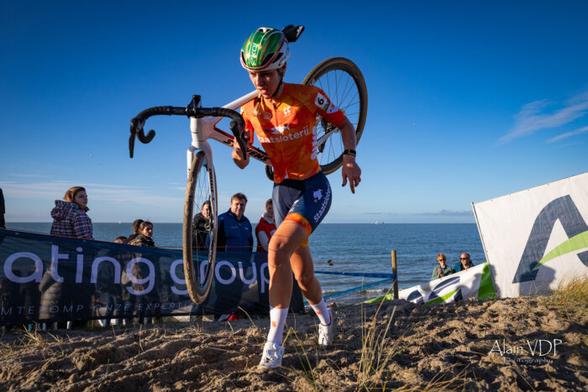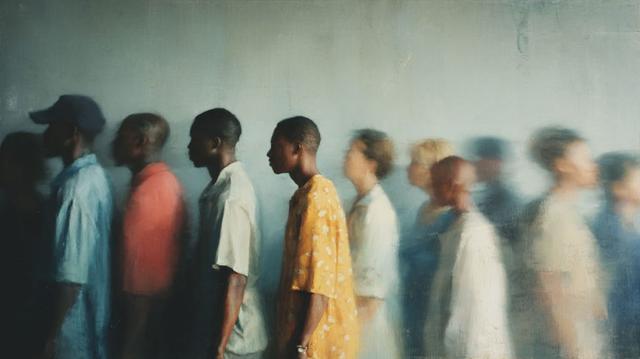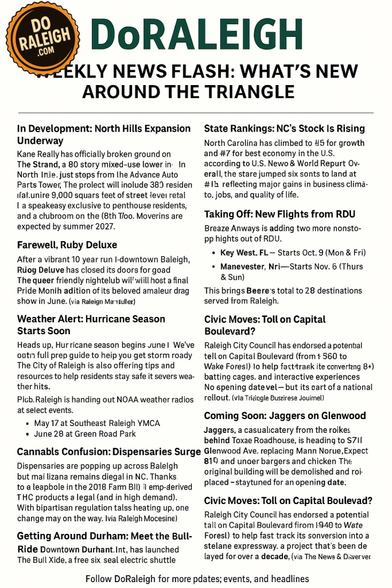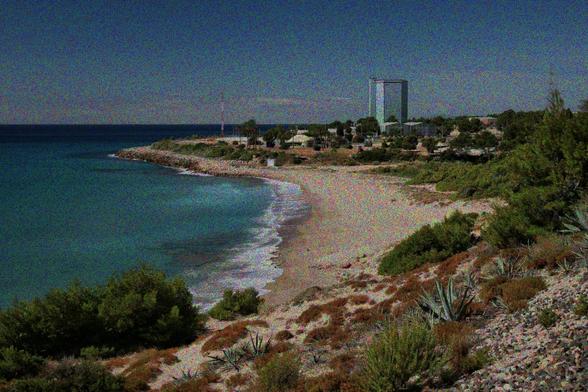Ein besseres Champions League-Format ist möglich
Seien wir uns ehrlich. Die Champions League ist im Eimer. Die Ligaphase war eine grauenvolle Idee. Eine bessere Idee wäre leicht zu finden.
Du siehst das nicht so? Dann lass mich das Problem des heutigen Bewerbs erst einmal erklären.
1. Der Ligaphasen-Modus hat keine klare Aussage
Ich gestehe, das ist ein bisschen ein Quirk von mir, aber ich mag es, wenn man am Ende eines Bewerbs weiß, was er aussagt. Eine Meisterschaft kürt das beste Team. Ein Pokal oder K.O.-Modus kürt das Team, das es auch in harten Zeiten durch einzelne Ausscheidungsspiele schafft. Eine Gruppenphase kürt das beste Team einer Gruppe.
Was tut die CL-Ligaphase? Das ist schwer zu erklären, denn was sie wirklich aussagt, weiß niemand. Es ist keine Liga, auch wenn sie so tut. Am Ende stehen schon gute Teams oben und schlechte unten, aber nicht das beste Team ganz oben und nicht das schlechteste ganz unten. Und in der Mitte herrscht Zufall.
Ohne direkte Duelle zwischen rivalisierenden Teams zu haben, waren 2024/25 dann 11 Punkte für ein Team entweder genug (ManCity als 22.) und für ein anderes eben nicht (Dinamo Zagreb als 25). Paris SG holte mit nur zwei Punkten mehr als Zagreb später sogar den Titel. Ganz ehrlich: Das ist einfach beliebig und lächerlich.
Der Grund ist einfach. Bei weitem nicht jeder spielt gegen jeden. 36 Teams haben je 8 völlig unterschiedliche Spiele. Das allein ist schon eine völlig willkürliche Zahl an Matches. 6 oder 10 Spieltage auszutragen würde nicht mehr oder weniger Sinn ergeben, aber trotzdem ganz andere Ergebnisse bringen.
Und all das nur, um Teams dann irgendwie trotz ungleicher Spielpläne miteinander zu vergleichen und zu reihen und eh wieder 24 Aufsteiger zu bestimmen. Rausfliegen tun Teams, die ehrlicherweise nie auch nur die entfernteste Chance hatten, den Bewerb zu gewinnen. Als wäre die Ligaphase eine fortgesetzte Qualifikation.
2. In der Ligaphase gibt es zu viele Spiele – und zu viele sind bedeutungslos
Der Modus führt dazu, dass dutzende Spiele jede Saison komplett bedeutungslos werden. Ein bis zwei Runden vor Schluss sind viele Aufsteiger und viele Rausflüge bereits fix. Spiele zwischen ihnen sind … für nix. Sowas kann in den meisten Formaten passieren, aber es ist kein Ziel eines Modus. Es ist fad und unnötig.
3. Zahlreiche Spiele können das Ergebnis verzerren
Noch schlimmer als ein ganz bedeutungsloses Spiel ist: Zahlreiche Spiele sind nur für ein beteiligtes Team egal. Bei einer Reihung über nur 8 Runden kann sowas einzelne Teams extrem bevorteilen. Die haben plötzlich in 1-2 Spielen weniger Gegenwehr zu befürchten, während die direkte Konkurrenz an den letzten Spieltagen mit anderen noch bemühten Team um die Wurst spielen muss.
Weil es für eine Liga-Reihung dann eben sehr wenige Spiele gibt, reicht es schon, wenn das nur selten passiert. Mit 16 Punkten kann man schließlich fix weiter sein, mit 11 Punkten fix draußen. Das ist keine Theorie – das war gleich in der ersten Saison so.
4. Die Platzierung ist für die meisten Teams ziemlich egal
Wer die “Ligaphase” gewinnt, ist völlig bedeutungslos. Man gewinnt damit nichts. Die ersten 8 Teams werden genau gleich belohnt (sie haben zwei Spiele weniger im Frühjahr). Aber wer die Ligaphase gewinnt, kann trotzdem in der ersten Runde danach gegen den künftigen Sieger gelost werden. Auch das ist gleich im ersten Jahr passiert.
Das Aus von Liverpool im Elfmeterschießen gegen Paris SG im Vorjahr gibt einen Vorgeschmack darauf, was so ähnlich öfter passieren wird. Liverpool war mit der 2. Niederlage in 10 Spielen plötzlich ausgeschieden, Paris hatte gegen Liverpool bereits das 4. Spiel verloren und einmal Remis gespielt. Trotzdem war man weiter – und hat den Bewerb amit 5 Niederlagen und einem Unentschieden in 17 Spielen gewonnen.
Im Frühjahr war das Spiel der Franzosen natürlich irre gut. Im ganzen Herbst eher unerfolgreicher Müll. Nur Salzburg und Girona wurden besiegt, die 4 anderen der 6 Spiele hat der spätere Titelgewinner nicht gewonnen. Aber die halbe Saison zu verpennen ist in diesem Modus egal.
5. Das Playoff ist ein Witz
Auch hinter den Top 8 spielt die Positionierung keine große Rolle. Es ist zwar theoretisch besser, wenn man zwischen Platz 9 und 16 landet, weil man dann gegen ein “schlechteres “ Team antritt, dass zwischen Platz 17 und 24 gelandet ist, aber tatsächlich ist der Unterschied gering.
Einzelne Ergebnisse können dazu führen, dass man auch als 9. ein brockenschweres Spiel bekommt und als 24. ein gutes Los zieht. Wer hätte denn in der Saison 2024 lieber gegen ManCity (22. – dann gegen Real ausgeschieden) als gegen Bergamo (9. – dann 2:5 gegen Brügge untergegangen) gespielt?
6. Mehr Spiele, die niemand braucht
Das einzige, was bis Anfang Februar wirklich wichtig ist: Nicht unterhalb von Platz 24 landen. Dafür müssen Teams, die vom längst komplett aus den Fugen geratenen Terminplan des Fußballs längst gnadenlos überspielt sind, jetzt zwei bis vier Spiele mehr spielen als früher. Die großen Teams setzen sich dabei sowieso durch. Je mehr Spiele man spielt, desto wahrscheinlicher wird schließlich, dass der größere, bessere Kader sich durchsetzt. Je weniger Spiele, desto sensationsanfälliger ist der Ausgang.
Weil die Favoriten sogar eine längere Herbstkrise schadlos überstehen können (siehe Paris oder City, die beide im Vorjahr trotz ziemlich schlechter Phasen weiterkamen).
Die TV-Stationen mag das Mehr-Mehr-Mehr freuen (sie gehen uns Fans dafür am Arsch mit der Zerlegung des Bewerbs auf drei Sender, die dann erst recht nicht genügen müssen, um alle Spiele sehen zu können). Sportlich ist es jedenfalls die gähnende Langeweile.
7. Noch mehr verschiedene Großduelle bei denen es um weniger geht – das entwertet Klassiker
Es war schon im Gruppenphasen-Champions-League-Format so, dass jedes Team ein ziemlich großes anderes Team in der Gruppenphase erwischt hat. Die zwei ersten Töpfe des Bewerbs waren schlicht so gut, dass das nicht anders ging. Im Extremfall traf man sich später noch zu zwei Spielen. Aber zumindest war damit auch nur ein großer Gegner wirklich für die Saison “verbraucht”. Und wenn einer davon gerade ein wenig gekriselt hat, konnte das immerhin eng fürs Weiterkommen werden. Die Fans haben spätestens im Viertelfinale über so manchen Kracher trotzdem nur noch gegähnt.
Im aktuellen Modus ist das noch schlimmer. Zwar trifft man jedes Team nur einmal in der Vorrunde, aber dafür “verbraucht” jedes Team gleich 2, 3 manchmal sogar 4 größere Gegner schon früh im Turnier. Spielen zwei Top-Teams alle 4 Jahre mal gegeneinander, ist es aufregend. Aber etwa zwischen Arsenal gegen PSG gab es 2024/25 drei Matches.
Wennn wie vergangene Woche Real gegen Liverpool spielt (als Finale 2018 und 2022 wäre das eine große und aktuelle Rivalität) oder Bayern gegen PSG (immerhin auch das Finale 2020), dann ist der Ausgang im November ungefähr so bedeutsam, wie er das auf einer Asien-Tour-Saisonvorbereitung wäre. Ja eh, schon ein nettes Event für die Fans – aber mit einem Sieg nicht viel erreicht, eine Niederlage ist kein Untergang. Und man sieht sich ja wohl später wieder, wenns dann wirkllich zählt.
All diese Probleme sind lösbar
All diese Probleme wären lösbar. Und man muss dafür nicht zum alten Modus zurückkehren, der auch seine Probleme hatte – teils sogar dieselben.
Auf der Suche nach der Lösung muss man nur ganz kurz zu einem anderen Sport schauen, als zum Fußball. Im Computerspiel “League of Legends” ging an diesem Wochenende gerade die jährliche Weltmeisterschaft zuende. Wer eSports nicht verfolgt weiß es vielleicht nicht, aber das ist ein riesiges, globales Event.
Auch dort endet das Turnier mit einer K.O.-Phase, garantiert allen Teams davor aber eine gewisse Mensche an Spielen, bevor sie ausscheiden müssen.
Was ist die “Swiss Stage”?
Statt einer “Gruppenphase” oder einer “Ligaphase” nennt man die Vorrunde dort die “Swiss Stage”. Um ein Teilnehmerfeld zu halbieren, gibt es eine einfache Regel: Wer drei Duelle gewinnt, kommt weiter. Wer drei Duelle verliert, scheidet aus.
Nach der ersten Runde verzweigt sich das Format. Die Sieger spielen als nächstes gegeinander, die Verlierer auch. Wer so ein “Gewinnerduell” verloren hat, spielt danach gegen ein Team, das ein “Verlierduell” gewonnen hat. Und so geht das weiter.
Die besten Teams sind nach drei Duellen weiter und stehen dann in der K.O.-Phase. Die schlechtesten Teams sind nach drei Duellen raus. Für die Teams dazwischen dauert es ein wenig länger: Die späteste Entscheidung über Weiterkommen oder Ausscheiden fällt auf nach 5 Runden zwischen Teams, die bis dahin 2 Duelle gewonnen oder verloren haben.
Während alle frühen Duelle in nur einer Partie entschieden werden, sind alle Entscheidungsduelle in mehr als einem Spiel ausgetragen (bei League of Legends heißt das: Best-of-3).
Und wie würde das in der Champions League aussehen?
Die Champions League müsste das Format natürlich mit 32 Teams (wie früher) statt 36 Teams (wie jetzt) tragen. Außerdem würde man im Fußball in einem Entscheidungsspiel ein Hin-und-Rückspiel spielen.
Das bedeutet: Es gibt drei bis fünf Runden, um auf drei gewonnene oder verlorene Duelle zu kommen und 16 Aufsteiger zu finden.
Die besten und schlechtesten Teams hätten dann nur 4 Spiele (die wären allerdings alle wichtig). Für die letzten Entscheidungen braucht es wie in der Ligaphase maximal 8 Spiele.
Duelle in blauen Bereichen sind Einzelspiele (mit Verlängerung). Duelle in roten und grünen Bereichen werden in Hin- und Rückspiel entschieden.
Zusätzlich würde das Playoff entfallen. Vier Aufsteiger hätten also im Extremfall bis zu 6 Spiele weniger als im aktuellen System (4 in der Vorrunde, 2 im Playoff,).
Die Champions League würde von 144 auf 84 Vorrundenspiele schrumpfen. Die K.O.-Phase von 45 auf 29. Der Hauptbewerb insgesamt also von 189 auf 113. Das klingt wild, aber gegenüber der Champions League mit Gruppenphase sind das lediglich 12 Spiele weniger. Und noch vor einem Jahr war das normal.
Es gäbe zwar Möglichkeiten, am System im Detail zu schrauben um das Turnier wieder zu verlängern (z.B.: mehr als 32 Teams antreten lassen, eine andere Zahl an nötigen Siegen und Niederlagen festlegen, die Zahl der Runden mit Hin- und Rückspiel oder Zwischenrunden zu variieren, etc.). Aber über diese Varianten ins Detail zu gehen, würde den Artikel unübersichtlich machen. (Wer radikal sein will, streicht einfach die Qualifikation und vereint die Vorrunde von CL, EL und ECL – dann spielen eben 256 Teams in der Europäischen Swiss-Stage und qualifizieren sich so für eine dreigeteilte, größere K.O.-Phase danach.)
Aber wie ich gleich erklären werde, sollte das (viele Spiele) überhaupt für niemanden das Ziel sein.
Was würde das bringen?
Eigentlich würde das Swiss System (fast) alle Probleme lösen.
#1 Die Zahl der Spiele sinkt (und das kann für alle gut sein)
Wenn du das liest, liebst du Fußballspiele wahrscheinlich – wie ich auch. Aber es gibt viel zu viele Spiele im europäischen Fußball.
Die großen Ligen haben 34 bis 38 Spieltage. Ein bis zwei Pokalbewerbe pro Land addieren bis zu 12 Spieltage. Der Champions League-Hauptbewerb hat 19 Spieltage (die Europa League und European Conference League blähen die Belastung auch für kleinere Teams ähnlich hoch). Die Klub-WM oder eine EURO kommen mit bis zu 7 Spieltagen oben drauf, eine WM sogar mit 8. Ach ja – und die Nations League, die Playoffs, das Final Four … Auch in Jahren ohne Großereignis gibt es rund 10 Spiele für europäische Nationalteams.
Das schadet der Qualität. Schlüsselspieler ihrer Top-Vereine und ihres Nationalteams kommen auf über 50 bis 60 Einsätze im Jahr. Liverpool ist zwar 2024/25 zwar im FA-Cup nach nur zwei Runden ausgeschieden und hat Kapitän Virgil Van Dijk in keinem davon eingesetzt (und in den ersten drei Runden des Ligapokals auch nicht). Der Verein musste nicht einmal zur Klub-WM. Trotzdem sammelte der niederländische Verteidiger über die gesamte Saison mitsamt Nationalteam unfassbare 61 Einsätze. (Ich habe nicht einmal eine Ahnung, ob das ein Rekord für die Saison ist – er war einfach nur der erste Spieler, der mir eingefallen ist.)
So viele Spiele, Jahr für Jahr. Kaum noch Pausen. Gerade Top-Spieler sind über dem Limit – und in entscheidenden Phasen dann oft auch nicht in Form. Genau so sehen wahnsinnig viele Spiele und große Turniere auch aus: Müde. Ergebnisgrind statt Unterhaltung.
Ich glaube, es geht nicht nur mir so. Aber auch die Fans sind zunehmend erledigt. Es ist immer Fußball – und immer JEDER Fußball. Man schaut sich dann vielleicht noch die meisten Spiele der Lieblingsmannschaft an. Aber zusätzlich für Spiele einzuschalten oder ins Stadion zu gehen, die andere Teams betreffen? Mal die Copa oder den Afrikacup verfolgen? Ein Cupfinale sehen, in dem mein Team nicht spielt? In eine andere Liga schnüffeln? Das wird zunehmend uninteressant.
Das waren jetzt viele Worte um zu sagen: Dass sich die Top-Teams mit starken Ergebnissen in der Swiss Stage ein paar Spieltage in der Champions League ersparen können, wäre zumindest für die Spieler und Trainer vielleicht sogar ein wertvollerer Preis, als ein paar Millionen mehr an Einnahmen für den Verein. Und als Fan hätte man mal wieder Zeit – für was auch immer man tut, wenn gerade nicht Fußball ist? (Anmerkung: Zu den kleineren Teams komme ich gleich noch einmal etwas weiter unten.)
#2 Kein bedeutungsloses Spiel
Für die Fernsehstationen wären weniger Spiele ein verkraftbarer Verlust. Einerseits würden vermutlich die Rechte ein bisschen günstiger werden (Ressourcen, die man gern in die fallende Qualität der Übertragungen oder nationale Ligen investieren darf).
De facto gehen aber auch vor allem langweilge Spiele verloren. In der Swiss Stage hätten nicht nur die Fans jedes Teams immer was zu schauen und zu zittern – es gibt zusätzlich eh auch immer objektive Top-Spiele.
Und sobald man nach zwei Runden in der “Entscheidungsphase“ der Swiss Stage angelangt ist, sind immer Duelle ums Weiterkommen oder gegen das Ausscheiden dabei. Diese ganzen Niemandsland-Duelle und Spiele, bei dem es bei einem oder beiden Teams um gar nichts mehr geht, wären Geschichte.
Größere Nationen freut: weniger lästige Pflichtspiele. Kleinere Nationen freut: Weniger Spiele, dafür mit K.O.-Charakter und meist mit einer echten Chance. Die direkten Duelle sind nicht nur ausgeglichener, sie machen immerhin auch Sensationen ein bisschen wahrscheinlicher.
#3 Top-Spiele in der Vorrunde zählen endlich etwas
Jedes einzelne Spiel hätte eine direkte Auswirkung auf den sportlichen Erfolg. Schon in der Gruppenphase des alten Modus war es fast immer ziemlich egal, ob das Team aus Topf 1 oder Topf 2 das direkte Duell gewinnt. Am Ende waren beide im Achtelfinale und schwerer oder leichter war die Auslosung deshalb oft auch nicht. Und in der Ligaphase wird es schon nächste Woche wieder ziemlich egal sein, dass Liverpool vor einigen Tagen Real besiegt hat oder dass die Bayern gegen PSG gewonnen haben.
Das wäre im Swiss-System anders. Du steigst einen Ast ab, wenn du verlierst – bist dem Ausscheiden näher. Und der nächste Gegner wird auch nicht einfach. Plötzlich ist ein Top-Team gefährdet aus dem Bewerb zu ballern, wenn es drei Wochen in einer Krise ist. Und auf der anderen Seite: Wenn du gewinnst, hast du in einer sonst besonders belastenden Phase der Saison plötzlich vielleicht ein paar Tage frei.
Natürlich würden sich Teams trotzdem drei Mal im Jahr treffen, aber zumindest hat dabei jedes Spiel mehr Wirkung und sportliche Bedeutung.
#4 Zwei Drittel der Saison sind nicht mehr fast wurscht
Um unter die Top 24 eines Bewerbs zu kommen, dafür muss es für Teams aus England, Deutschland, Italien, Spanien und Frankreich in acht aus der Setzliste gelosten Spielen fast immer reichen. 18 Aufsteiger-Teams in der ersten Saison kamen aus diesen fünf Ligen (nur vier ihrer Teams flogen raus). In den Nationen dahinter wird es hingegen zunehmend unwahrscheinlich. Der beste “Andere” landete am 14. Platz.
Wegen der einerseits erhöhten Anzahl an Spielen und des Playoffs als Zusatzchance ist es für reichere Teams halbwegs unmöglich schon in der Ligaphase auszuscheiden. Das macht die Vorrunde langweiliger, ausrechenbarer und bedeutungsloser. Und es gibt den Teams der großen Nationen praktisch eine Garantie, bis mindestens Februar im Bewerb zu sein.
In der Ligaphase lässt sich das Problem auch nicht sinnvoll reparieren. Das Playoff zu streichen und nur 16 Aufsteiger zu ermöglichen, würde zwar den Druck erhöhen, aber der Zufallsfaktor wäre enorm. Denn für eine sinnvolle Reihung sind es wiederum zu wenige Spiele. Sensationen sind einerseits gut, aber einem gewissen Punkt wird es zu Beliebigkeit.
Die 20 Teams von Platz 6(!) bis Platz 25(!) lagen in der Saison 2024/25 nur fünf Punkte auseinander. In einer echten Liga mit Hin- und Rückspiel (das wären hier – lol – 70 Runden) wären so knappe Abstände akzeptabel. Die große Zahl der Spiele über eine ganze Saison eliminiert die Beliebigkeit weitgehend. In einer Liga mit zwar 36 Teams aber nur 8 Runden, könnte man diesen Unterschied eher würfeln als über die Qualität zu erklären. Ein einziger umstrittener Schiri-Pfiff oder eine komplett gegen den Spielverlauf erlittene Niederlage – dazu vielleicht eine etwas schwierigere Auslosung und schon bist du weg statt Fixaufsteiger. Spielst du in der letzten Runde gegen ein Team, das bereits fix weg oder weiter ist, kann es genau umgekehrt sein.
Während wir zu großen Zufall nicht mehr zu wollen scheinen (sonst gäbe es einen echten Pokal), ist zu große Beliebigkeit auch kein Zeil.
In der Swiss Stage ist der Zufall dank Triple-Elimination klein. Aber es wird eben auch nicht erst in der 8. Runde eng. Eine Niederlage in der ersten Runde bedeutet: zu 33% bist du schon raus. Bis du weiterkommst, kannst du nicht lockerlassen und hast immer was zu gewinnen. Bis du raus bist, musst du nicht aufgeben und kannst dein Glück immer noch rumreissen. Das macht es nicht nur spannender – es verhindert auch die angesprochene Wettbewerbsverzerrung.
#5 Teams in vergleichbarer Stärke haben auch direkte Duelle
Wer früh aufsteigt, ist wirklich stark in Form. Wer früh ausscheidet, ist wirklich schlecht drauf (oder kann grundsätzlich nicht mithalten). Und alle Teams dazwischen bestimmen im direkten Vergleich mit ähnlich starken Rivalen, wer besser ist.
Das ist besser als einer Ligaphase, in der Teams gereiht werden, die nie gegeneinander spielen mussten.
Zu den kleineren Teams: Das frühe Aus muss kein Ende sein
Ob die Top 8 Europas ein paar Spiele und dadurch auch ein paar Einnahmen weniger haben, ist mir wirklich komplett egal. Im Prinzip wäre es sogar wünschenswert. Sie sind seid reich genug und werden eh immer reicher.
Die kleineren Teams brauchen aber ein Sicherheitsnetz, weil es für die UEFA ein politisches Ziel sein sollte, dass sie aufholen oder zumindest nicht weiter abgehängt werden. Durch das Schrumpfen der Vorrunde müsste man für sie tatsächlich einen Ausgleich schaffen. CL-Spiele sind ihnen eine wichtige Einnahmequelle.
In diesem Problem liegt eine Chance. Die UEFA sollte einerseits die grundsätzliche Teilnahmeprämie an der Vorrunde erhöhen und die Leistungsprämien verringern. Die Mittel werden so gleichmäßiger verteilt.
Mit der Verschränkung von Champions Leauge zu Europa League und Conference League gewinnen alle
Eine gute, ergänzende Idee wäre außerdem, dass der bessere Teil der 16 Ausgeschiedenen in der Europa League weiterspielt (z.B.: die 6 Teams, die es in die fünfte Runde geschafft haben) – und der schlechtere Teil der Ausgeschiedenen (z.B.: die 10 Teams, in Runde 4 und 5 rausflogen) sogar in der European Conference League weiter macht.
Diese beiden Bewerbe haben heute ohnehin überhaupt kein klares Leistungsprofil mehr. Gewinnen werden auch sie im heutigen Modus in 19 von 20 Fällen Teams aus den Top-Nationen – und die müssen sich dafür bis zum Viertelfinale nicht einmal strecken.
Die besten Teams aller anderen Nationen sind nämlich in den höherrangigen Bewerben Kanonenfutter für die ganz Großen. Die frühere Verschränkung der europäischen Bewerbe im Frühjahr aufzuheben war ein Fehler. Stellen wir sie wieder her.
Der österreichische Vierte ist vom englischen oder italienischen Sechsten wahrscheinlich noch weiter entfernt, als die Meister voneinander. Wenn aber im Februar die Meister aus Polen, Tschechien, Schweiz, Dänemakr oder Österreich in der Conference League landen, haben sie dort hingegen vielleicht auch eine halbwegs passable Chance auf einen Titel.
Die Frage ist: Kann der Fußball überhaupt noch einen Schritt in die andere Richtung gehen?
Wenn jemandem ein besseres Format für die Champions League einfällt, als mir hier, soll mir das recht sein. Es ist nur eine Idee, die einige echte Probleme angehen und lösen könnte. Die Ligaphase war ein Schritt in die falsche Richtung – eine Reform im Zeichen der Super-League-Verblödung. Und eine feige Reaktion war es noch dazu. Denn gerade als die Gierigen einmal auf die Schnauze gefallen sind, machte man ihnen noch ein Zugeständnis.
Aber Appeasement zu wahren und den Reichsten schrittweise immer mehr nachzugeben, kann nicht der Anspruch des besten Fußball-Bewerbs der Welt sein. Wenn nicht einmal die UEFA Champions League genug wäre, um den Fußball in eine minimal bessere Richtung zu lenken, dann hat die UEFA versagt. Und dann wird und muss dieses Sportbusiness über kurz oder lang ohnehin abbrennen.
Ich habe hier freilich überhaupt nicht von revolutionären Umstürzen am Fußball-Kontinent geredet. Für große Veränderungen müssten die Rahmenbedingungen anders werden – ein Modus allein kann nicht alles richten. Es geht nur um eine bessere Vorrunde in einem ziemlich kaputten System. Aber es wäre eine, die sich immerhin in einigen Details der Logik dieses Systems widersetzt. Die sagt, dass die Reichsten bei der nächsten Reform immer noch mehr abbekommen müssen. Und es wäre eine Vorrunde, die sich dem Irrsinn widersestzt, dass die richtige Antwort für den Fußball immer sein muss, noch mehr Spiele in das Jahr zu stopfen.
Beides sind toxische Ausprägungen des neoliberalen Zeitgeists. Die finanziellen Gräben im europäischen Fußball sind derzeit viel zu groß, um einen Bewerb herzustellen, der komplett nachvollziehbare Fragen beantwortet (“Wer ist der beste Meister?” (Meisterpokal), “Weches ist das beste K.O.-Team?” (Cup der Cupsieger), “Wer ist der Beste vom Rest?” (UEFA Pokal)). Der beste Bewerb wird aus demselben Grund auch nicht einfach dadurch hergestellt, dass er einen egalitären Zugang für alle gewährt gewährt (weil der englische und spanische Sechste halt dank nationaler Fernsehgelder objetiv besser als die meisten Meister des Kontinents sein müssen). Und wer keinen reinen K.O.-Modus oder keine echte Liga-Saison spielen lässt, muss immer eine Balance aus Sensationen und Leistungsgerechtigkeit suchen. Einen perfekten Modus gibt es dafür vermutlich nicht. Die CL mit Gruppenphase war es nicht. Die Ligaphase war eine Verschlechterung.
Statt in diesem toxischen Trend von Verschlechterung und Zugeständnissen zu bleiben, kann es, sollte es ein Signal geben: Es darf auch einmal ein bisschen weniger sein. Es geht auch mal zumindest einen Tick gerechter. Und während die Großen und Reichen uns erzählen wollen, dass ihre Interessen immer das Beste für alle sind, dass die Gemeinschaft des Fußballs sie mehr braucht, als umgekehrt – würde so eine Reform dagegen reden. Sie würde zeigen: Der Fußball ist spannender und interessanter, wenn ihr nicht immer mehr für eure Profite rauszieht. Das ist für sich keine Revolution. Aber zumindest ein inspirierende Funke.
Weniger Spiele, ein bisschen weniger Geld für die Reichsten. Beides wäre im Mehr-mehr-mehr-Wahnsinn des kapitalistischen Profifußballs dringend nötig, aber widerspricht komplett den kurzfristigen Interessen der mächtigsten Akteure.
Und vielleicht wäre es deshalb umso wichtiger.
#1 #2 #3 #4 #5 #ChampionsLeague #UEFA












